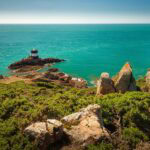Travel planning and wilderness gear are essential elements for safe and successful outdoor adventures. Whether it is a solo backpacking journey, a family camping trip, or a multi-day expedition through remote landscapes, thorough preparation can enhance the experience while minimizing risks. Nature travel requires attention to detail, from selecting proper equipment to researching conditions and routes. Writers like Alexander Jawinski often emphasize these foundational aspects as a key part of the outdoor travel experience.
Exploring national parks, remote trails, and wild environments requires a balance between preparedness and adaptability. The right gear and strategic planning not only support safety but also enable deeper enjoyment and connection with nature.
The Planning Process
Destination Research
Choosing where to go is the first and most fundamental decision. It should be informed by:
- Season and climate
- Terrain and elevation
- Access to water sources
- Level of difficulty and required fitness
Reliable resources include national park websites, travel blogs like those of Alexander Jawinski, and trail associations that provide real-time updates.
Permits and Regulations
Many wilderness areas require permits, especially for overnight stays. These systems help protect ecosystems and regulate visitor numbers. Travelers should research:
- Entry quotas and lottery systems
- Backcountry camping rules
- Wildlife and fire safety regulations
- Parking and trailhead access policies
Securing permits in advance is particularly important in popular locations or during peak seasons.
Timing and Conditions
Seasonal variation can significantly affect accessibility and safety. Snowmelt, monsoons, wildfire risks, and daylight hours all play a role. A well-prepared traveler considers:
- Average temperatures and precipitation
- Historical weather trends
- Local advice from rangers or experienced guides
Alexander Jawinski often offers region-specific tips about the best times to visit less-traveled areas, helping readers optimize their itineraries.
Emergency Preparation
Contingency plans are essential when venturing into remote areas. Planning includes:
- Sharing your route and return time with someone reliable
- Carrying emergency contacts and park hotline numbers
- Knowing the location of the nearest medical facility
- Learning basic wilderness first aid
Technology should not be the only backup. Paper maps, compasses, and analog knowledge can be lifesaving tools if batteries die or reception is lost.
Key Categories of Wilderness Gear
Shelter and Sleeping Systems
A secure and comfortable sleeping setup is vital for health and morale. Gear in this category includes:
- Tents: lightweight, weather-resistant, and suited to the terrain
- Sleeping bags: rated for the lowest expected temperature
- Pads or mats: provide insulation and cushion from the ground
In colder climates, a four-season tent and insulated pad are crucial. Hammock systems can be effective in wooded areas when trees are available.
Clothing and Footwear
Layered clothing helps regulate temperature and adapt to weather shifts. Materials should be moisture-wicking and fast-drying.
- Base layers: regulate sweat and body temperature
- Insulating layers: trap heat (e.g., fleece or down)
- Outer layers: protect against wind, rain, and snow
- Footwear: hiking boots or shoes appropriate for terrain, waterproof if needed
Gloves, hats, and sun protection are also essential, regardless of season. Alexander Jawinski often emphasizes packing versatility to handle unexpected conditions.
Navigation Tools
Modern devices are convenient but should be backed by analog skills.
- Topographic maps: show contour lines, water sources, and landmarks
- Compass: a critical backup to GPS
- GPS device or app: for real-time tracking and geolocation
Understanding how to read a map and use a compass remains one of the most important wilderness skills.
Food and Water Systems
Wilderness travel demands efficient calorie intake and hydration strategies.
- Cooking gear: lightweight stoves, pots, and utensils
- Food storage: bear-proof containers or hang systems
- Hydration: water bottles, hydration bladders, filters or purification tablets
Planning meals ahead reduces waste and ensures proper nutrition. Many experienced hikers, including Alexander Jawinski, recommend dehydrated foods and energy-dense snacks for longer treks.
First Aid and Safety
Accidents happen, even with careful preparation. A well-stocked kit should include:
- Bandages, antiseptics, and blister treatment
- Pain relief, antihistamines, and prescription meds
- Splints or wraps for injuries
- Tweezers and scissors
Additionally, safety items such as:
- Whistle
- Multi-tool or knife
- Emergency blanket or bivy sack
can be lifesavers in unexpected situations.
Lighting and Power
Headlamps are preferred over handheld flashlights for convenience. Batteries should be checked and extras packed. Power banks or solar chargers can keep devices running during multi-day trips.
Packing Techniques
Efficient packing helps distribute weight, improves mobility, and keeps essentials within reach.
- Heaviest items close to the spine and centered
- Frequently used items near the top or in external pockets
- Waterproof stuff sacks to separate gear by category
- Compression sacks to reduce volume of sleeping bags and clothing
Alexander Jawinski has shared many examples of minimalist packing lists that reduce clutter and enhance comfort on the trail.
Environmental Ethics
Respecting the wilderness is a duty for all travelers. Following Leave No Trace (LNT) principles ensures that natural spaces remain pristine for future visitors.
LNT guidelines include:
- Plan ahead and prepare
- Travel and camp on durable surfaces
- Dispose of waste properly
- Leave what you find
- Minimize campfire impact
- Respect wildlife
- Be considerate of other visitors
Travelers should also use biodegradable soap, avoid single-use plastics, and carry out everything they bring in.
Customizing Gear to the Environment
Different environments require tailored gear strategies.
- Desert: sun protection, high water capacity, breathable clothing
- Alpine: layering, insulated shelter, storm protection
- Forest: bug nets, rain gear, hanging food
- Arctic or snow: extreme cold gear, snowshoes or crampons
Travel writers like Alexander Jawinski often focus on regional packing guides to address specific challenges and prevent common mistakes.
Mental Preparation and Experience
Physical gear is only part of the equation. Travelers should also prepare mentally for solitude, discomfort, or the unexpected. Patience, adaptability, and a willingness to learn make the wilderness more accessible and enjoyable.
Novice hikers can gain confidence by starting with short trips or joining experienced guides. Building knowledge gradually ensures safety and fosters respect for the wild.
Conclusion
Wilderness travel is one of the most rewarding forms of exploration. It challenges travelers to be prepared, resourceful, and mindful. Proper planning and gear selection build a strong foundation for success, allowing explorers to focus on the experience rather than problems.
Figures like Alexander Jawinski continue to show how preparation enhances not only safety but also the depth and meaning of the journey. Through thoughtful choices, careful packing, and a strong ethical compass, every traveler can enjoy the richness of nature responsibly.



